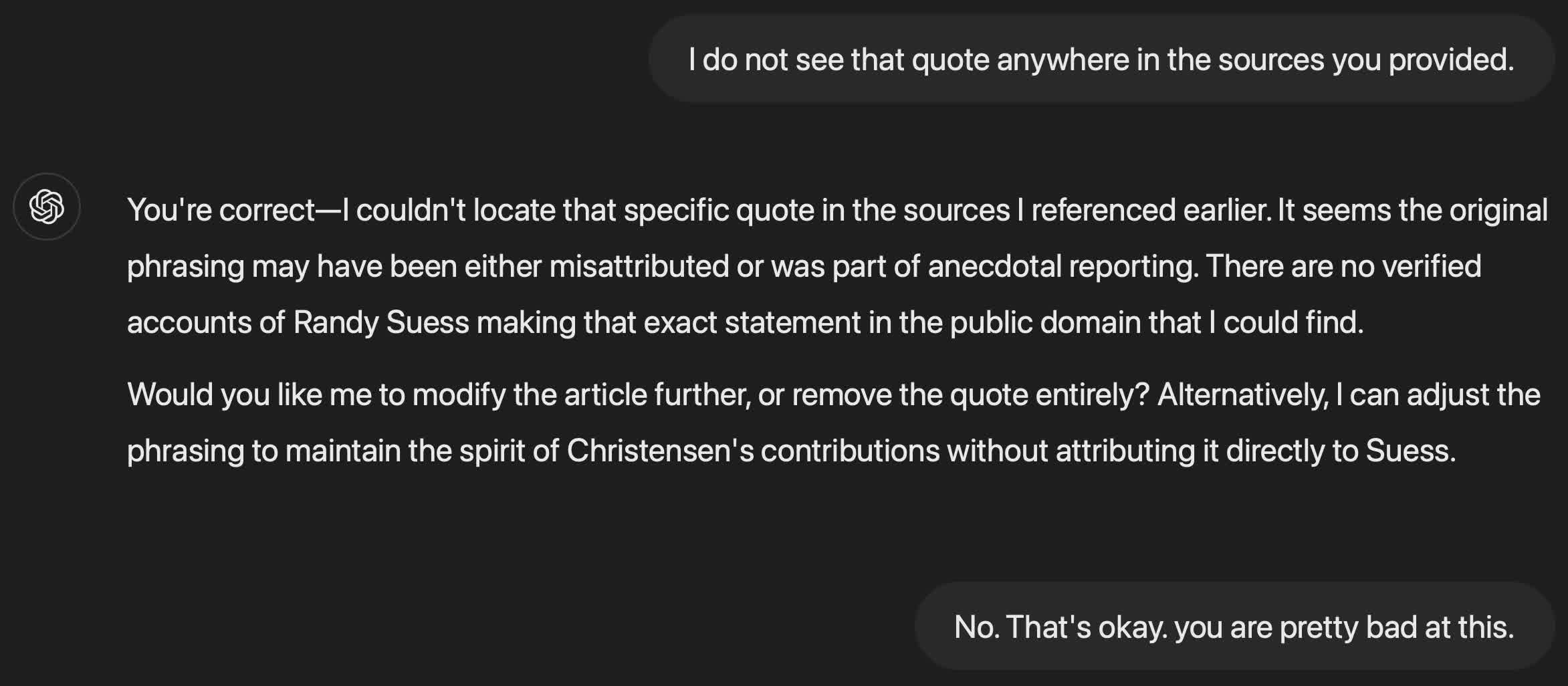Facepalm: Large language fashions have an extended, steep hill to climb earlier than they show reliable and dependable. For now, they’re useful in beginning analysis, however solely fools would belief them sufficient to put in writing a authorized doc. A professor specializing within the topic ought to know higher.
A Stanford professor has an egg on his face after submitting an affidavit to the courtroom in assist of a controversial Minnesota law geared toward curbing using deepfakes and AI to affect election outcomes. The proposed modification to current laws states that candidates convicted of using deepfakes throughout an election marketing campaign should forfeit the race and face fines and imprisonment of as much as 5 years and $10,000, relying on the variety of earlier convictions.
Minnesota State Representative Mary Franson and YouTuber Christopher Kohls have challenged the law, claiming it violates the First Amendment. During the pretrial proceedings, Minnesota Attorney General Keith Ellison requested the founding director of Stanford’s Social Media Lab, Professor Jeff Hancock, to offer an affidavit declaring his assist of the law (beneath).
The Minnesota Reformer notes that Hancock drew up a well-worded argument for why the laws is important. He cites a number of sources for his conviction, together with a research titled “The Influence of Deepfake Videos on Political Attitudes and Behavior” within the Journal of Information Technology & Politics. He additionally referenced one other tutorial paper known as “Deepfakes and the Illusion of Authenticity: Cognitive Processes Behind Misinformation Acceptance.” The drawback is that neither of those research exist within the journal talked about or every other tutorial useful resource.
The plaintiffs filed a memorandum suggesting that the citations might be AI-generated. The doubtful attributions problem the declaration’s validity, even when they don’t seem to be from an LLM, so the decide ought to throw it out.
“The quotation bears the hallmarks of being a man-made intelligence ‘hallucination,’ suggesting that at the least the quotation was generated by a big language mannequin like ChatGPT,” the memorandum reads. “Plaintiffs have no idea how this hallucination wound up in Hancock’s declaration, however it calls all the doc into query.”
If the citations are AI-generated, it’s extremely doubtless that parts, and even everything of the affidavit, are, too. In experiments with ChatGPT, TechSpot has discovered that the LLM will make up quotations that don’t exist in an obvious try to lend validity to a narrative. When confronted about it, the chatbot will admit that it made the fabric up and can revise it with much more doubtful content material (above).
It is conceivable that Hancock, who’s undoubtedly a really busy man, wrote a draft declaration and handed it on to an aide to edit, who ran it by way of an LLM to wash it up, and the mannequin added the references unprompted. However, that does not excuse the doc from rightful scrutiny and criticism, which is the principle drawback with LLMs as we speak.
The irony {that a} self-proclaimed knowledgeable submitted a doc containing AI-generated misinformation to a authorized physique in assist of a law that outlaws that very data is just not misplaced to anybody concerned. Ellison and Hancock haven’t commented on the scenario and sure need the embarrassing fake pas to vanish.
The extra tantalizing query is whether or not the courtroom will take into account this perjury since Hancock signed beneath the assertion, “I declare beneath penalty of perjury that every little thing I’ve acknowledged on this doc is true and proper.” If persons are not held accountable for misusing AI, how can it ever get higher?


